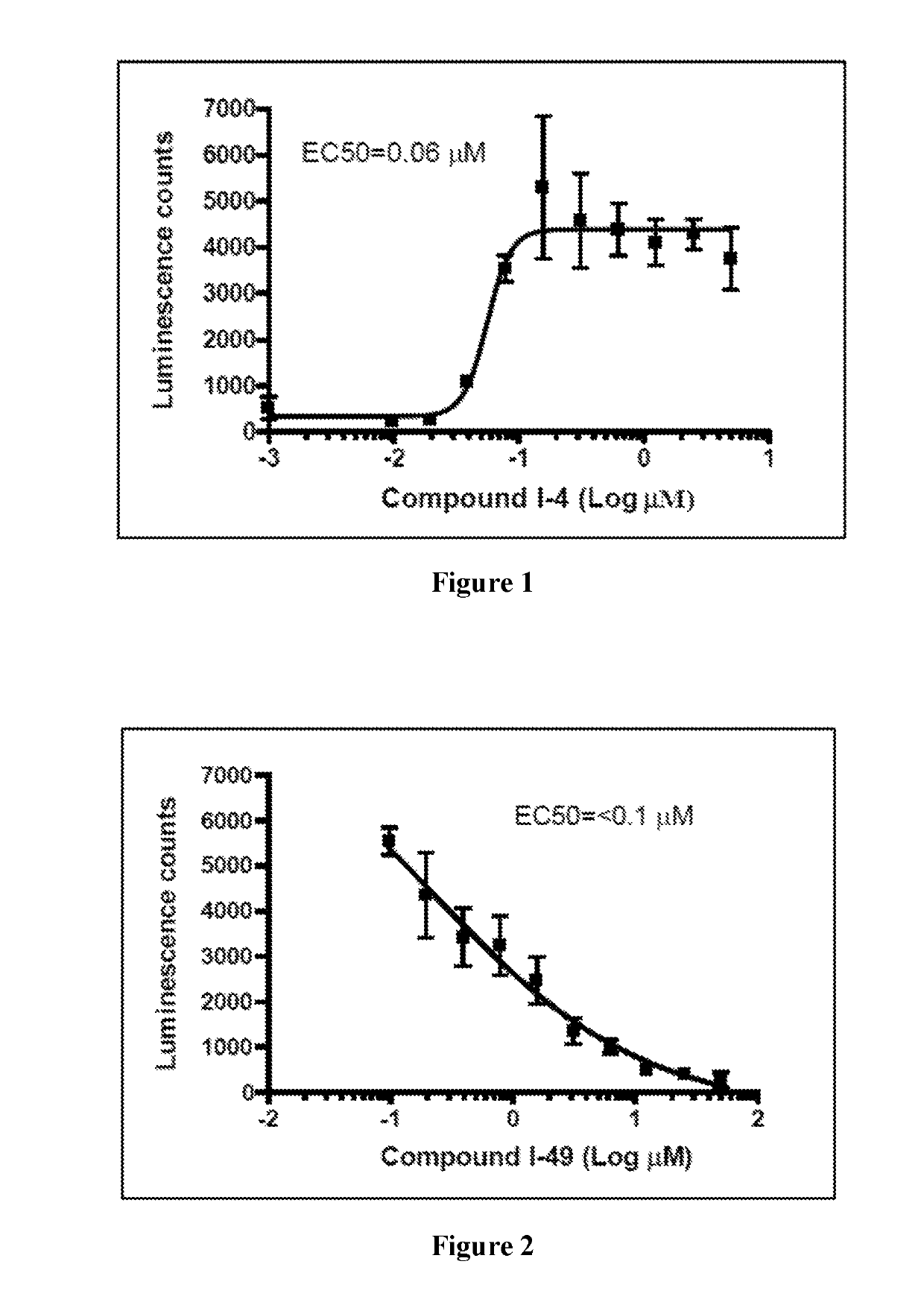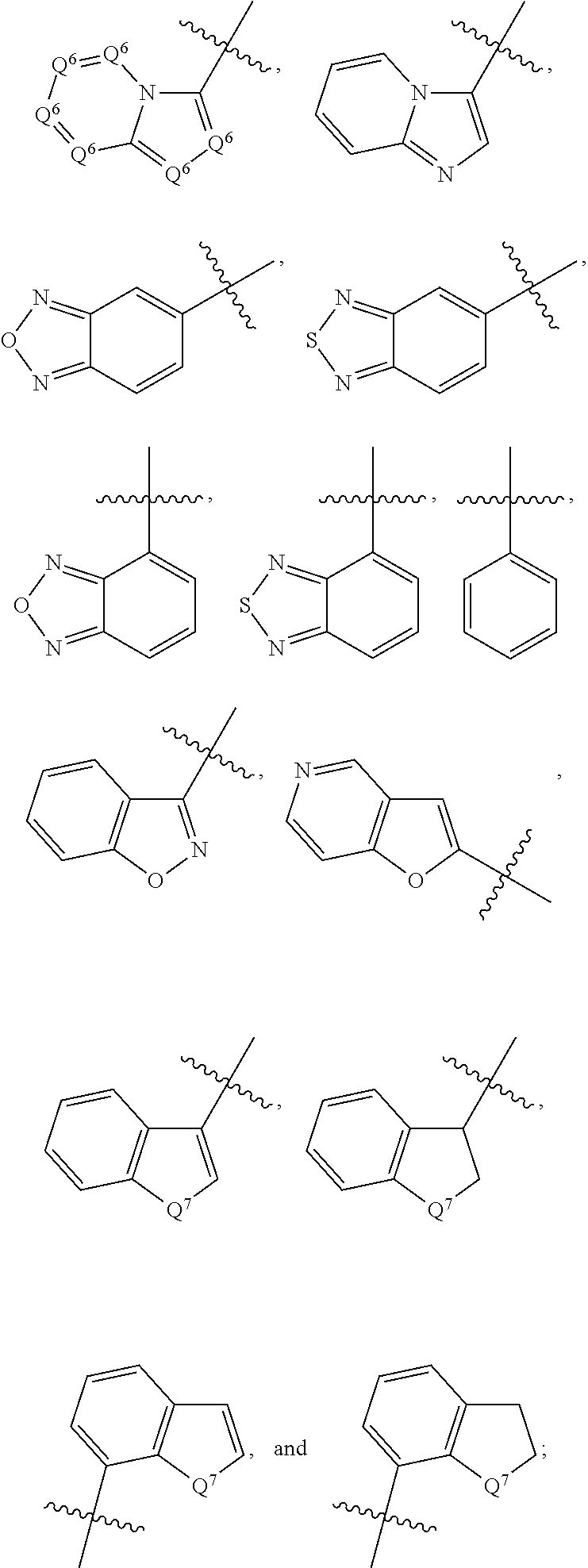1,5-dihydro-2H-pyrrol-2-one compounds and methods of using same
a technology of dihydro-2h-pyrrol and compounds, applied in the field of 1, 5dihydro-2h-pyrrol2one compounds, can solve the problems of difficulty in maintaining tissue homeostasis, and increased hair cell numbers, and achieve the effect of reducing the activity of tgfbeta
- Summary
- Abstract
- Description
- Claims
- Application Information
AI Technical Summary
Benefits of technology
Problems solved by technology
Method used
Image
Examples
examples
Experimental Procedures
Synthesis of Intermediate 2.
[0383]
[0384]To a solution of intermediate 1 (20 g, 213 mmol) in MeCN (540 ml) was ethyl (E)-4-oxo-butenoate (28.6 g, 223 mmol). The reaction mixture was heated to 80° C. and stirred for 6 hrs. The reaction mixture was concentrated under reduced pressure, the residue was purified by flash column chromatography (eluted with Dichloromethane / MeOH from 1:0 to 200:1) to give the crude intermediate 2 (25 g) as brown solid.
Synthesis of Intermediate 3A.
[0385]
[0386]To a solution of intermediate 2 (1 g, 4.9 mmol) in EtOH (6 ml) was added NaOH (0.6 g, 14.7 mmol) in H2O (6 ml). The mixture was stirred at room temperature for overnight. The solvent was concentrated in vacuum, the residue was dissolved in EtOH, filtered. The solvent was concentrated in vacuum again to give intermediate 3A as a brown solid (1 g, crude).
Synthesis of Intermediate 3.
[0387]
[0388]To a solution of crude intermediate 2 (25 g) in MeOH (100 ml) was added NH3 / MeOH (6 M, 100 ...
PUM
| Property | Measurement | Unit |
|---|---|---|
| diameter | aaaaa | aaaaa |
| field size | aaaaa | aaaaa |
| field size | aaaaa | aaaaa |
Abstract
Description
Claims
Application Information
 Login to View More
Login to View More - R&D
- Intellectual Property
- Life Sciences
- Materials
- Tech Scout
- Unparalleled Data Quality
- Higher Quality Content
- 60% Fewer Hallucinations
Browse by: Latest US Patents, China's latest patents, Technical Efficacy Thesaurus, Application Domain, Technology Topic, Popular Technical Reports.
© 2025 PatSnap. All rights reserved.Legal|Privacy policy|Modern Slavery Act Transparency Statement|Sitemap|About US| Contact US: help@patsnap.com



